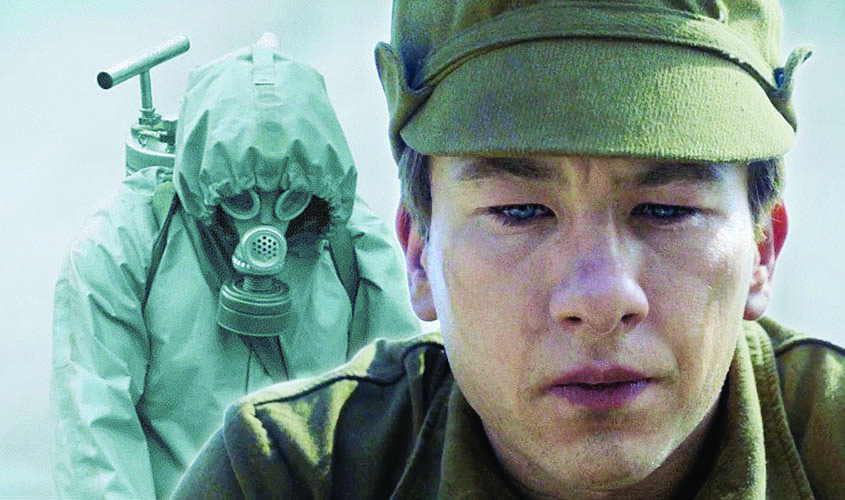Even since its worldwide release, on 5 June, HBO’s latest miniseries Chernobyl has become the most talked about and analysed show in TV history, second only to Breaking Bad. Unlike other popular series of recent times—Game of Thrones comes to mind—Chernobyl has won popular approval as well as critical acclaim. In fact, the Game of Thrones author, George R.R. Martin, recently went on record as a Chernobyl fan. “If this one does not win a truckload of Emmys,” Martin said, “there’s no justice in Hollywood.”
While the rave reviews about the storyline and cinematography of the series have taken over the airwaves, they have also ended up obscuring a crucial element of Chernobyl: the message it delivers. The show is reminder that too much greed and obsession with development can result in mass destruction; and that technology is not in itself a force for good.
The story begins with the Valery Legasov character recording something on a cassette. He wraps half-a-dozen cassettes in a newspaper and hides them carefully in a secret window in a nearby lane. He then hangs himself. This is two years after the worst nuclear disaster in human history, when a series of explosions tore up the Chernobyl Nuclear Power Plant in northern Ukraine on 26 April 1986, filling up the region with lethal radiation.
The next scene of show, takes us to ground zero. We see a married couple in a small apartment, sleeping quietly in their bedroom room. Suddenly, there is a blast outside and total commotion on the streets. A fire is visible in the distance but it isn’t an ordinary fire. A stream of blue light emerges from it, and it begins to rain ashes.
The show highlights the negligence and corruption on the part of the higher authorities in Chernobyl that led to this catastrophe, for which generations paid the price. Experts say that the areas around the damaged plant would remain uninhabitable for another 20,000 years.
The three lead characters of the series are Valery Legasov, a nuclear physicist played by Jarred Harris; Ulyana Khomyuk, another nuclear physicist, played by Emily Watson; and Boris Scherbina, the Soviet Deputy Chairman, played by Stellan Skarsgard.
It is not just the powerful performances and the well-written dialogues that keep the viewers hooked. It is also the cinematography and the sheer visual brilliance of Chernobyl. While the show has been highly praised for its makers’ attention to small details—props, sets, clothes and the recreated air of the Soviet era—there are some factual errors in the show which have drawn criticism . For example, there is a sequence about a pregnant wife of a firefighter, who loses her baby because of radiation. Although such an incident did take place in real life, researchers found no evidence that the prenatal death was caused by radiation. There’s also an overdramatised bit in the show, when it was conjectured that if the Chernobyl plant “explodes”, a vast region of Europe would become uninhabitable. As a matter of fact, nuclear plants don’t explode like nuclear bombs.
But despite these niggles, the series is well-balanced. It feels tense and colourless. The direction is neat and the script well-defined, precise. The makers of the show have surely not made it with the sole motive to entertain. Chernobyl aims to also make you think, and not just think, but also relive some of the horrid scenes from that time.
Even before the release of Chernobyl, protestors around the world had been highlighting the threat nuclear plants pose to human civilisation. The Fukushima Daiichi nuclear disaster in March 2011 made it amply clear to all of us that there are many potential Chernobyls on this planet.
The bleak takeaway from the series is that Chernobyl was an avoidable disaster. If only the officials, the scientists and others involved had behaved responsibly; if only more money and more time was spent on the maintenance of the plant; If only the right safeguards were put in place at the right time—the catastrophe would have been averted and thousands of lives would have been saved.

